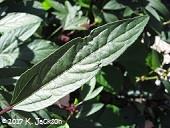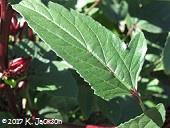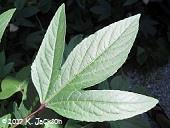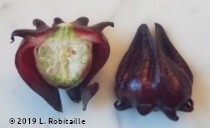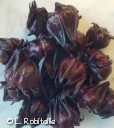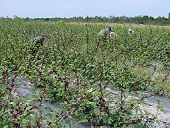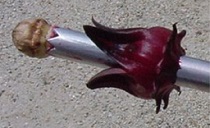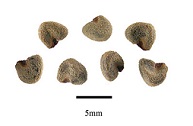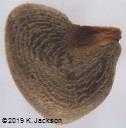| Roselle, Hibiscus sabdariffa | |||||||||||||||||||||||||||||||||
|---|---|---|---|---|---|---|---|---|---|---|---|---|---|---|---|---|---|---|---|---|---|---|---|---|---|---|---|---|---|---|---|---|---|
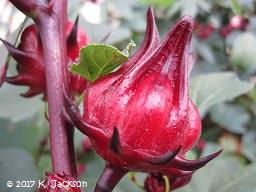 Fig. 1  Hibiscus sabdariffa, calyx The primary edible part is the fleshy sepal (a calyx), which surrounds the fading flower and developing seed capsule 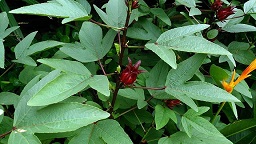 Fig. 2  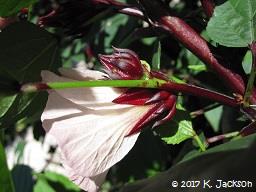 Fig. 6  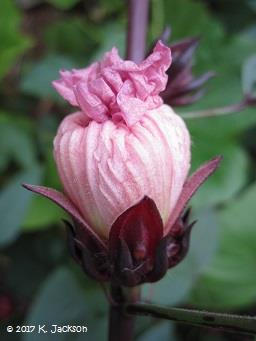 Fig. 7  Flower unfurling 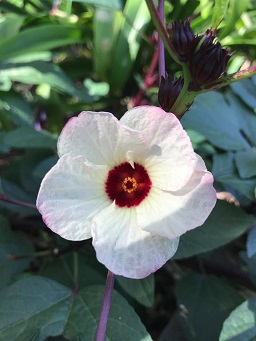 Fig. 8  Flower, Queensland, Australia 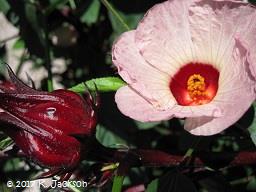 Fig. 11  Flower and developing calyx 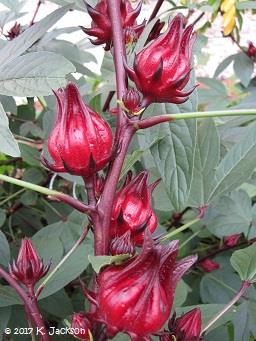 Fig. 12  Calyces and leaves 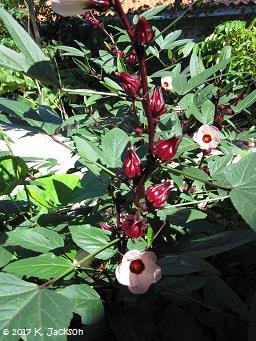 Fig. 13  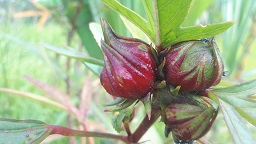 Fig. 18  Seed capsules for next year's crop Malaysia 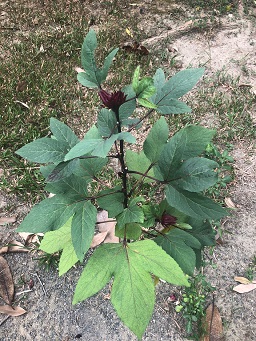 Fig. 21  Juvenile plant 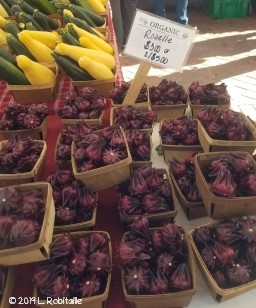 Fig. 22  Sarasota's Saturday Downtown Farmers' Market (November) 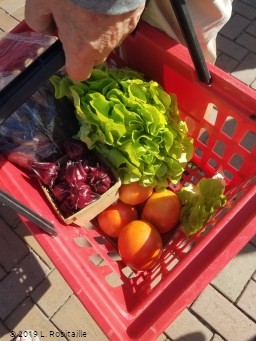 Fig. 23  Fresh and organic 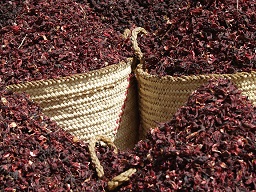 Fig. 29  Karkady - Dried Hibiscus in Aswan souk 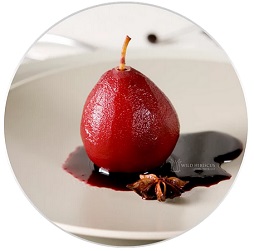 Fig. 30  Poached Pear Hibiscus Flower Extract 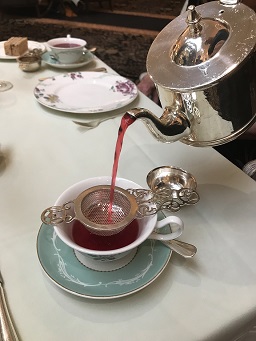 Fig. 31  High Tea at the Savoy Hotel |
Scientific
name Hibiscus sabdariffa L. Common names English: Florida cranberry, Indian sorrel, Jamaica sorrel, lemon bush, natal roselle, Queensland jelly plant, red sorrel, roselle, roselle hemp, sorrel; French: oseille de Guinée; German: Malventee, Rosella; Portuguese (Brazil): carurú-de-Guiné, quiabo-azedoz, quiabo-de-Angola, quiabo-róseo, quiabo-roxo, rosela, vinagreira; Spanish: acedera de Guinea, rosa de Jamaica, serení; Swedish: rosellhibiskus. Also gongura, karkadi, karkade, sour-sour, zobo. 1,5,9 Synonyms Abelmoschus cruentus Bertol, H. digitatus Cav., H. gossypiifolius Mill., H. sanguineus Griff., Sabdariffa rubra Kostel 7 Relatives Cotton, Gossypium spp.; okra, A. esculentus, syn. H. esculentus; false roselle, cranberry hibiscus, H. acetosella; Indian hemp, kenaf, H. cannabinus Family Malvaceae (Mallow family) Origin Central and West Africa 2 USDA hardiness zones 9-10 Uses Medicine, tea; calyx: preserves, sauce, juice, wine, flavoring, coloring; leaves: cooked greens, salad Height 5-7 ft (1.5-2.2 m) Life cycle Annual/perennial Leaf Narrow, lobed, reddish-green 1 Flower Typically yellow with a dark center, 3 in. (8 cm) 2 Fruit (calyx) 0.5-1.5 in. (1-4 cm) Season Heat tolerant Days to maturity Calyces: 4 months Soil tolerance Moderate to low fertility pH preference Wide range. Optimal: 5.5-7.5; absolute: 4.5-8.5 6 Spacing (plants) 36 in. x 18 in. (91 cm x 45 cm) 9, closer for vegetative harvest USDA Nutrient Content pdf Light requirement Full sun Photo period Short day (<12 hours) 6; some new varieties produce year round 4 Water requirement Supplement if rainfall is insufficient Soil salt tolerance Optimal: low (<4 dS/m); absolute: low (<4 dS/m) Cold tolerance Damaged by frost Temperature requirement 50-100 °F (10-38 °C) Invasive potential * None reported Reading Material Roselle—Hibiscus sabdariffa L., University of Florida pdf Roselle, Gardening Solutions, University of Florida Hibiscus sabdariffa L., Handbook of Energy Crops Roselle, Hibiscus sabdariffa L., Fruits of Warm Climates Description H. sabdariffa var. sabdariffa (Roselle) is important for food, while H. sabdariffa var. altissima Wester is important for it's high quality fiber. Roselle is a common garden plant in the tropics and grows readily in Florida. Many parts of the plant, including the seeds, leaves, fruits, and roots, are used medicinally or in foods. The bright red calyx is acid with a tart taste and therefore makes a great substitute for cranberries. The size of the calyx varies with each variety and the culture is very similar to eggplants and okra. 1,2 Importance and Distribution Major producers are China (East Asia), Sudan (Africa) and Thailand (Southeast Asia). Widely distributed in the Tropics and Subtropics of both hemispheres roselle has become naturalized in many areas of the West Indies and Central America. Germany: is the leading importer of roselle calyx for food coloring and flavoring; USA: imports approximately 5,000 metric tons of dried roselle calyces annually for brewing herbal teas. 6,9 Leaves Leaf shapes vary. The plant normally starts with a simple single-lobed leaf. As it grows bigger, the leaves develop three to five lobes. In the greenhouse the leaves become smaller at fruit maturity and the number of lobes is reduced to one. 9
Fig. 3,4,5. Leaf variation on the same plant Flowers Plants do not flower until the short days of late fall or early winter. In Thailand tea is made from the dried flower. 9
Calyx
Cultivars H. sabdariffa var. sabdariffa: ruber has red or variegated edible calyx, and H. sabdariffa var. sabdariffa: albus has a green edible calyx. ‘Victor’ is a good variety grown in south Florida. 1 Harvesting Calyx. Gather before any woody tissue develops in the calyx, a day or so after the petals drop; they should be tender, crisp, and plump. Harvesting encourages more flower buds to develop. With the right conditions one plant could yield 12-16 lb (5.45-7.26 kg). Remove the seeds/capsule before using them in recipes. Harvest before temperatures drop below 40 °F (4.5 °C). 1,2 Leaf harvest may begin as early as six weeks after transplanting or eight weeks after direct seeding. At harvest, the main shoot and branches are cut back with a sharp knife or cutter and allowed to regrow. Subsequent cuts are done at 2–3 week intervals until the frost in late October or early November. 9
Fig. 16. Harvesting roselle planted on bris (sandy) soils Fig. 17. Decoring - removal of a seed capsule from the fruit using a simple hand-held gadget to obtain its calyx. Discard the seed pod. Fun in the Garden - Roselle (How to Remove the Seed Capsule), University of Florida, Leon County Storage Calyces will stay fresh for about a week under refrigeration. They can be frozen or dried. Leaves. Cut branches/leaves will retain freshness only for a few hours after harvest. For this reason, the cut ends must be dipped in water or the whole foliage kept in cold storage (45–50°F or 4°C) soon after harvest. If dipped in water, the cut branches/leaves will retain freshness for 24–48 hours. From our observations if kept in cold storage (45–50°F) the leaves may retain freshness for 7–10 days. 9 Seed
Fig. 19. Seeds Fig. 20. Magnified Planting/growing H. sabdariffa is usually started in April or in late August in Florida, requiring about 4 months to mature. 1 Days to germination 5 to 10 days depending on type and temperature. 9 Pruning Early pruning will increase branching and the development of more flowering shoots. 2 Fertilizing 2–4 weeks after planting, apply fertilizer based on the results of your soil test. 9 Irrigation H. sabdariffa appreciates frequent watering but will do well in dry or wet conditions. 4 Pests/Diseases Root-knot nematodes are the major pest you will have to deal with when growing roselle, so be sure to practice crop rotation to reduce nematode problems. 2 Hibiscus Pest Insects and Mites, University of Florida ext. link Food uses The leaves are used for food preparation; the calyx and flowers for tea, flavoring, and coloring. 9 The calyces are used as a substitute for cranberries. In the Caribbean, roselle is used to make a festive Christmas drink. Bakers can substitute roselle for rhubarb when making a fruit crisp or pie. The seeds, which are high in protein, can be roasted and brewed like coffee, or ground and added to soups and salads. The nutrient-rich calyces can either be stored frozen or dried for making cordials, punches, and jams. The calyces can also be used to add color and flavor to herb teas. 2 In India young leaves are used in a manner similar to spinach, leaves are mixed with other vegetables and food condiments. In Senegal and Nigeria young calyces are parboiled, dried, and mixed with other vegetables and condiments; are substituted for meat or fish, and dried calyces are used for beverages. 9
Fig. 24. A refreshing roselle drink Fig. 25. Hibiscus tea Fig. 26. Hibiscus Flower Extract Fig. 27. Wild Hibiscus Flowers in Rose Syrup Fig. 28. Nothing says fun like a flower in your Champagne! Jamaican Sorrel, University of Florida, Blogs, Leon County UF extension officials say cranberry substitute is so easy to grow, anyone can do it, University of Florida, Blogs Culinary uses, Australian native hibiscus and hibiscus like species ext. link Nutritional Value The leaves, calyx (flower bud cover or sepals) and flowers are rich in pigments (esp. anthocyanins) and antioxidants; high in iron, magnesium, and Vitamins A and C. 9 Medicinal Properties ** All roselle types have traditional medicinal values, and applications vary widely among cultures all around the world. 9 Other Uses Fiber; seeds and leaves are used as feed. 6 Other Edibles in the Malvaceae family: Okra, Abelmoschus esculentus Sunset hibiscus, A. manihot General Edible Flowers, Colorado State University, Extension pdf Hardy Hibiscus for Florida Landscapes, University of Florida pdf Further Reading American Hibiscus Society ext. link Australian Native Hibiscus and Hibiscus like Species ext. link HIBISCUS Post-harvest Operations, Food and Agriculture Organization of the United Nations pdf Malvaceae, Edible Leaves Of The Tropics Mallow Madness, Eat The Weeds Roselle and Other Edible Hibiscus, University of Florida, Community blogs Rosella, Sub-Tropical Fruit Club of Qld Roselle Botanical Art Older Material Production of Roselle, 1937, US Department of Agriculture Hibiscus, 1919, 1972 Sturtevant’s Edible Plants Of The World Roselle: Its Culture and Uses, 1907, U.S. Dept. of Agriculture pdf List of Growers and Vendors |
||||||||||||||||||||||||||||||||
| Bibliography 1 Stephens, James M. "Roselle—Hibiscus sabdariffa L." Horticultural Sciences Dept., UF/IFAS Extension, Original pub. date May 1994, Revised Sept. 2015, Reviewed Oct. 2018, EDIS, edis.ifas.ufl.edu/mv126. Accessed 30 June 2019. 2 "Roselle." Gardening Solutions, University of Florida IFAS Extension, gardeningsolutions.ifas.ufl.edu/plants/edibles/vegetables/roselle.html. Accessed 30 June 2019. 3 Newman, S. E. and A. Stoven O’Connor. "Edible Flowers." Gardening Series, Fact Sheet No. 7.237, 12/96, revised 9/13, Colorado State University Extension, extension.colostate.edu/topic-areas/yard-garden/edible-flowers-7-237/. Accessed 30 June 2019. 4 Hylton, Trevor. "Jamaican Sorrel." BLOGS.IFAS, 7 Aug. 2015, UF/IFAS Extension, Leon County, blogs.ifas.ufl.edu/leonco/2015/08/07/jamaican-sorrel/-varieties-university-florida-recommend/. Accessed 2 July 2019. 5 "Taxon: Hibiscus sabdariffa L." USDA, Agricultural Research Service, National Plant Germplasm System. 2019. Germplasm Resources Information Network (GRIN-Taxonomy). National Germplasm Resources Laboratory, Beltsville, Maryland. npgsweb.ars-grin.gov/gringlobal/taxonomydetail.aspx?id=19078. Accessed 12 Aug. 2019. 6 "Hibiscus sabdariffa." Ecocrop, Food and Agriculture Organization of the United Nations, FAO, ecocrop.fao.org/ecocrop/srv/en/cropView?id=1216. Accessed 12 Aug. 2019. 7 Porcher, Michel H. "Sorting Hibiscus names." The University of Melbourne, 13 May 2005, Multilingual Multiscript Plant Name Database, www.plantnames.unimelb.edu.au/Sorting/Hibiscus.html. Accessed 15 Aug. 2019. 8 Sturtevant, E. Lewis. Sturtevant’s Edible Plants Of The World. 1919, Edited by U. P. Hedrick, New York, Dover Publications, 1972. 9 Ayeni, Albert, et al. "Ultra-Niche Crops Series: Roselle (Hibiscus sabdariffa L.) Production and Marketing in New Jersey." Vegetable and Herb Crops Publications, New Jersey Agricultural Experiment Station, Rutgers, The State University of New Jersey, Aug. 2017, Ultra-Niche Crops, njaes.rutgers.edu/ultra-niche-crops. Accessed 14 Aug. 2019. Photographs Fig. 1,3,4,5,6,7,10,11,12,13,20 Jackson, Karen. "Hibiscus sabdariffa series." 2017, www.growables.org. Fig. 2 Mokkie. "Hibiscus sabdariffa. Common names: Roselle. 玫瑰茄. 洛神花. 洛神葵 (Chinese)." 13 July 2014, commons.wikimedia.org/wiki/File:Roselle_(Hibiscus_sabdariffa)_4.jpg. (CC BY-SA 3.0), Accessed 20 Sept. 2019. Fig. 8 baka. "Roselle Hibiscus sabdariffa Queensland, Australia." 34912280, Apr. 7, 2019, iNaturalist, (CC BY-NC 4.0), www.inaturalist.org/photos/34912280. Accessed 14 Sept. 2019. Fig. 9 baka. Roselle Hibiscus sabdariffa." Apr. 7, 2019, iNaturalist, (CC BY-NC 4.0), www.inaturalist.org/photos/34904653. Accessed16 Sept. 2019. Fig. 14,15,22,23 Robitaille, L. "Farmers market Roselle series." Nov. 2019, www.growables.org. Fig. 16 Osman, Mohamad bin. "Harvesting roselle planted on bris (sandy) soils." Universiti Kebangsaan Malaysia (UKM), 11 June 2007, Wikimedia Commons, Public Domain, commons.wikimedia.org/wiki/File:Mbo3.jpg. Accessed 16 Aug. 2019. Fig. 17 Osman, Mohamad bin. "Decoring - removal of a seed capsule from the fruit using a simple hand-held gadget to obtain its calyx." Universiti Kebangsaan Malaysia (UKM), 11 June 2007, Wikimedia Commons, Public Domain, commons.wikimedia.org/wiki/File:Mbo6.jpg. Accessed 16 Aug. 2019. Fig. 18 Ong Jyh Seng. Roselle Hibiscus sabdariffa Malaysia." Dec 28, 2018, iNaturalist, (CC BY-NC 4.0) , www.inaturalist.org/observations/19265772. Accessed 14 Sept. 2019. Fig. 19 Gibbons, Robert J. "Seeds" USDA, Agricultural Research Service, National Plant Germplasm System. 03-Mar-2006. Germplasm Resources Information Network (GRIN-Taxonomy). National Germplasm Resources Laboratory, Beltsville, Maryland. npgsweb.ars-grin.gov/gringlobal/ImageDisplay.aspx?type=taxonomy&id=5049. Accessed 12 Aug. 2019. Fig. 21 Wang, Penny. Roselle Hibiscus sabdariffa Taiwan." Nov. 10, 2018, iNaturalist, (CC BY-NC 4.0), www.inaturalist.org/photos/28071381. Accessed 16 Sept. 2019. Fig. 24 Osman, Mohamad bin. "A refreshing roselle drink." Universiti Kebangsaan Malaysia (UKM), 11 June 2007, Wikimedia Commons, Public Domain, commons.wikimedia.org/wiki/File:Mbo.jpg. Accessed 16 Aug. 2019. Fig. 25 Taras-fedora-syn. "Українська: упаковка чаю з Єипту.", 18 June 2018, Wikimedia Commons, (CC-BY-SA-4.0), commons.wikimedia.org/wiki/File:Hibiscus_Tea.jpg. Accessed 16 Aug. 2019. Fig. 26 "Hibiscus Flower Extract." Flower Extract - Hibiscus, 2019, Wild Hibiscus Flower Company, www.wildhibiscus.com/collections/retail-products/products/hibiscus-flower-extract?variant=1041725540. Accessed 17 Aug. 2019. Fig. 27 "Wild Hibiscus Flowers in Rose Syrup." 2019, Wild Hibiscus Flower Company, www.wildhibiscus.com/collections/flowers-in-syrup/products/wild-hibiscus-flowers-in-rose-syrup?variant=1043155200. Accessed 25 Sept. 2019. Fig. 28 "Nothing says fun like a flower in your Champagne!" The Fun Lovers and Party Goers, 2019, Wild Hibiscus Flower Company, www.wildhibiscus.com/pages/meet-the-wildlife. Accessed 17 Aug. 2019. Fig. 29 JohnnyMrNinja. "Karkady - Dried Hibiscus in Aswan souk." 15 Sept. 2007, Wikimedia Commons, (CC-BY-2.0), commons.wikimedia.org/wiki/File:Karkady_-_Dried_Hibiscus_in_Aswan_souk.jpg. Accessed 16 Aug. 2019. Fig. 30 "Poached Pear Hibiscus Flower Extract." Flower Extract - Hibiscus, 2019, Wild Hibiscus Flower Company, www.wildhibiscus.com/collections/retail-products/products/hibiscus-flower-extract?variant=1041725540. Accessed 17 Aug. 2019. Fig. 31 Walton, Payton. "Hibiscus Tea, High Tea at the Savoy Hotel." 1 May 2018, Wikimedia Commons, (CC-BY-SA-4.0), commons.wikimedia.org/wiki/File:Hibiscus_Tea,_High_Tea_at_the_Savoy_Hotel.jpg. Accessed 16 Aug. 2019. * UF/IFAS Assessment of Non-native Plants in Florida's Natural Areas ** The information provided above is not intended to be used as a guide for treatment of medical conditions using plants. Published 25 Sept. 2019 KJ. Last update 21 Dec. 2019 KJ |
|||||||||||||||||||||||||||||||||
